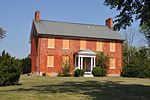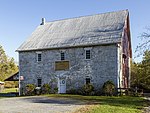Bunker Hill, West Virginia
1726 establishments in VirginiaPopulated places established in 1726Unincorporated communities in Berkeley County, West VirginiaUnincorporated communities in West VirginiaUse mdy dates from July 2023

Bunker Hill is an unincorporated community in Berkeley County, West Virginia, United States, located in the lower Shenandoah Valley on Winchester Pike (U.S. Route 11) at its junction with County Route 26 south of Martinsburg. It is the site of the confluence of Torytown Run and Mill Creek, a tributary of Opequon Creek which flows into Winchester, Virginia. According to the 2000 census, the Bunker Hill community has a population of 5,319.
Excerpt from the Wikipedia article Bunker Hill, West Virginia (License: CC BY-SA 3.0, Authors, Images).Bunker Hill, West Virginia
Giles Mill Road,
Geographical coordinates (GPS) Address Nearby Places Show on map
Geographical coordinates (GPS)
| Latitude | Longitude |
|---|---|
| N 39.333333333333 ° | E -78.054444444444 ° |
Address
Bunker Hill Presbyterian Church
Giles Mill Road
25413
West Virginia, United States
Open on Google Maps









